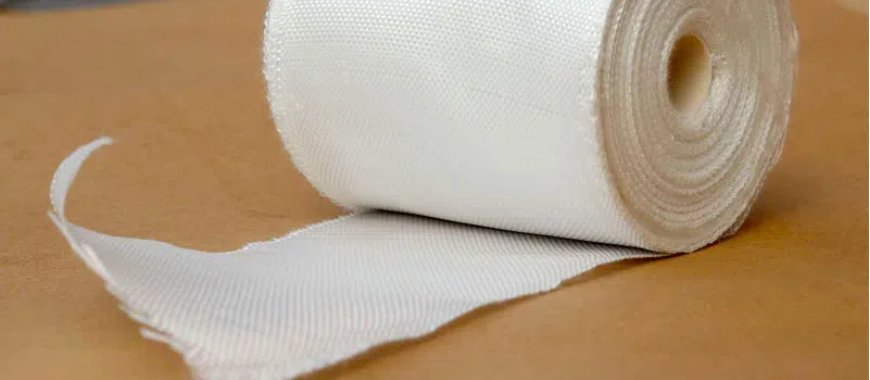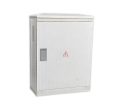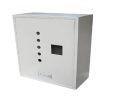
Fiberglass is a composite material made from fine glass fibers and resin, known for its versatility and strength. It plays a crucial role in numerous applications across various industries, including construction, automotive, and marine sectors. One of the key factors that influence the performance of fiberglass is its density of fiberglass. Density not only affects the material’s strength-to-weight ratio but also impacts its thermal insulation properties and resistance to chemicals. Understanding the density of fiberglass is essential for selecting the right type for specific applications, ensuring optimal durability and functionality in diverse environments. As fiberglass continues to evolve, its applications expand, making knowledge of its density increasingly important for manufacturers and users alike.
What is the Density of Fiberglass in Different Units?
The density of fiberglass is a critical property that affects its performance in various applications. In metric terms, the fiberglass density is commonly measured in kilograms per cubic meter (kg/m³). This unit provides a straightforward way to quantify the mass of fiberglass relative to its volume, which is essential for applications where weight and space considerations are crucial.
For practical applications, especially in regions that use the imperial system, it’s also important to convert the density of fiberglass to pounds per cubic inch (lb/in³). This conversion is particularly relevant in industries such as aerospace and automotive, where components need to meet specific weight requirements while maintaining structural integrity.
To convert from kg/m³ to lb/in³, one can use the conversion factor of 0.000578. For instance, a fiberglass material with a density of 1600 kg/m³ translates to approximately 0.058 lb/in³.
Understanding these measurements is vital in the manufacturing sector, as it helps engineers and designers select the appropriate type of fiberglass for their projects. The density directly influences strength, insulation properties, and overall material performance in real-world applications. Therefore, knowledge of the density of fiberglass, in both metric and imperial units, is essential for effective material selection and utilization in diverse industries.
Fiberglass Trunk Box Design and Installation Essentials
Density of Fiberglass Insulation
The density of fiberglass insulation is a crucial factor that directly influences its thermal resistance and overall performance in energy efficiency applications. Typically, fiberglass insulation has a density range between 10 to 30 kg/m³ (0.6 to 1.9 lb/ft³). This low density contributes to its lightweight nature, making it easy to handle and install. The insulation is available in various forms, such as batts, rolls, fiberglass sheet, and loose-fill, each designed for specific applications in residential and commercial buildings. These types of fiberglass insulation offer different installation methods and performance characteristics, providing flexibility in meeting varying thermal and acoustic insulation needs.
When comparing the density of fiberglass insulation to other common insulating materials, such as cellulose and foam, it becomes evident that fiberglass offers distinct advantages. For instance, cellulose insulation generally has a higher density, around 30 to 50 kg/m³, which can make it more effective in terms of soundproofing but less efficient for thermal insulation when compared to fiberglass. On the other hand, foam spray fiberglass insulation, while offering excellent air sealing properties, often comes with a significantly higher density, ranging from 32 to 50 kg/m³, leading to increased material costs and weight.
Moreover, the lower density of fiberglass insulation translates to better thermal performance per unit weight, as it traps air within its structure, providing high thermal resistance (R-value) while maintaining a lightweight profile. This characteristic not only enhances the energy efficiency of buildings but also reduces the load on structural components.
The density of fiberglass insulation plays a vital role in determining its effectiveness and efficiency as an insulating material. When chosen appropriately, fiberglass insulation can significantly improve energy conservation in various applications, making it a preferred choice in the construction industry.
What is the Density of Fiberglass and What is Fiberglass Used For?
Fiberglass is a versatile composite material widely utilized across various industries due to its unique properties, including high strength, durability, and low weight. One of the key characteristics that influence its application is the density of fiberglass, which varies based on its formulation and intended use.
Construction Industry
In the construction sector, fiberglass is primarily used for insulation materials, roofing, and structural components. Its low density of fiberglass allows for easy installation while providing excellent thermal insulation. Fiberglass-reinforced plastics (FRP) are also employed in building facades, decks, and flooring systems, offering a lightweight alternative to traditional materials without sacrificing strength or durability.
Automotive Industry
In the automotive industry, fiberglass is utilized in the manufacturing of body panels, bumpers, and other structural elements. The low density of fiberglass makes it an ideal choice for lightweight vehicle construction, contributing to improved fuel efficiency without compromising on strength. The ability to mold fiberglass into complex shapes also allows for greater design flexibility in vehicle manufacturing.
Marine Industry
Fiberglass is extensively used in the marine industry for constructing boat hulls, decks, and other components. The density of fiberglass in this context is crucial, as it provides buoyancy while ensuring structural integrity under harsh marine conditions. The material’s resistance to corrosion and water damage further enhances its suitability for marine applications.
Examples and Impact of Density
The density of fiberglass significantly affects its suitability for various applications. For instance, high-density fiberglass materials are often used in high-impact areas, such as in automotive parts that require extra strength, while lower-density fiberglass is ideal for insulation where lightweight and thermal resistance are critical.
Fiberglass serves a broad range of applications in construction, automotive, and marine industries, with its density of fiberglass playing a pivotal role in determining its effectiveness and suitability for each specific use. Its combination of lightweight properties and high strength makes it a preferred choice for many modern applications.
Grating Density and Its Role in Precision Measurements
Density of Fiberglass and Properties of Fiberglass
Fiberglass is renowned for its exceptional properties that make it a preferred material in various applications across industries. Understanding the density of fiberglass is essential to grasping its performance characteristics, as this property influences other vital attributes. Here, we delve into the key properties that define fiberglass and its widespread use.
Strength-to-Weight Ratio
One of the most notable features of fiberglass is its remarkable strength-to-weight ratio. Fiberglass offers high tensile strength while being significantly lighter than traditional materials like steel or wood. This characteristic allows for lightweight construction and design flexibility, making it an ideal choice for applications where reducing weight is critical, such as in automotive and aerospace industries.
Thermal and Acoustic Insulation Capabilities
Fiberglass is widely recognized for its excellent thermal insulation properties. Its density of fiberglass plays a crucial role here; lower-density fiberglass is often used in insulation applications to minimize heat transfer, resulting in energy efficiency in buildings and appliances. Additionally, fiberglass exhibits good acoustic insulation properties, effectively dampening sound. This makes it suitable for use in soundproofing materials, HVAC systems, and residential applications where noise reduction is desired.
Resistance to Chemicals and Moisture
Another significant property of fiberglass is its resistance to chemicals and moisture. Fiberglass is impervious to water, making it ideal for use in wet environments such as bathrooms, kitchens, and outdoor applications. Its ability to resist various chemicals, including acids and solvents, ensures longevity and durability in industries such as chemical processing and marine construction. This resistance reduces maintenance costs and extends the service life of fiberglass components.
The properties of fiberglass, including its favorable density of fiberglass, strength-to-weight ratio, thermal and acoustic insulation capabilities, and resistance to chemicals and moisture, make it an invaluable material in many sectors. These attributes not only enhance performance but also provide significant cost savings and efficiency in various applications.
Density of Fiberglass and What is Fiberglass Made Of?
Fiberglass is a composite material formed by the combination of glass fibers and resin, making it a versatile and widely used material in various industries. Understanding the components of fiberglass is essential to appreciate its properties, particularly its density of fiberglass, which directly influences its performance.
Components of Fiberglass
- Glass Fibers:
The primary component of fiberglass is the glass fiber, which is created from silica sand, limestone, and soda ash. These materials are melted together and then drawn into fine strands or fibers. The diameter of these fibers is typically between 5 to 30 micrometers. The strength of fiberglass largely derives from the arrangement and density of these glass fibers, which contribute significantly to its tensile strength and structural integrity. Long glass fiber is also used in some fiberglass formulations to further enhance its strength, offering superior mechanical performance and resistance to stress in demanding applications. - Resin:
The second key component is the resin, which serves as a matrix to bind the glass fibers together. Various types of resins can be used, including polyester, vinylester, and epoxy. The choice of resin affects the fiberglass’s overall properties, including its durability, chemical resistance, and thermal stability. For example, epoxy resins provide superior bonding strength and resistance to harsh chemicals, while polyester resins are more cost-effective and commonly used for general applications.
Influence on Density and Performance
The density of fiberglass is influenced by the ratio of glass fibers to resin in the composite. Higher fiber content typically results in increased density, which can enhance strength but may also affect flexibility and weight. The interplay between the fibers and the resin affects several performance metrics, including:
- Mechanical Strength: A higher concentration of glass fibers often leads to greater tensile strength, making the material suitable for demanding applications.
- Weight: Lower density fiberglass is lighter, which is advantageous in applications such as automotive and aerospace, where reducing weight is critical.
- Thermal Properties: The composition also affects thermal insulation capabilities, with certain resin types providing better insulation than others.
Fiberglass is made of glass fibers and resin, with the specific composition influencing its density of fiberglass and overall performance characteristics. Understanding these components helps in selecting the appropriate fiberglass type for various applications, ensuring optimal performance and durability.
Advantages of Using Fiberglass Composite Panel in Construction
What is the Density of Fiberglass and E-Glass Fiber Properties
E-glass fiber is one of the most widely used types of fiberglass due to its excellent balance of properties and cost-effectiveness. Recognized for its versatility, E-glass is primarily employed in applications requiring a strong, lightweight material. This section provides an overview of E-glass fiber, including its density of fiberglass and how it compares to other types.
Overview of E-Glass Fiber
E-glass, or alumino-borosilicate glass, is a type of fiberglass characterized by its high electrical insulation properties and moderate strength. It is primarily used in applications where electrical insulation and corrosion resistance are crucial. Common uses of E-glass fiber include:
- Electrical Components: E-glass is frequently used in printed circuit boards (PCBs) and other electrical insulation materials.
- Aerospace and Automotive: Due to its strength and lightweight nature, E-glass is employed in various components of vehicles and aircraft.
- Marine Applications: E-glass is used in boat hulls and other structures that require resistance to moisture and corrosion.
Specific Density of E-Glass Fiber
The density of fiberglass varies between different types of glass fibers. For E-glass fiber, the typical density is approximately 2.54 g/cm³ (or 2540 kg/m³). This density allows E-glass to provide a favorable strength-to-weight ratio, making it an ideal choice for many applications.
| Property | E-Glass Fiber | Other Fiberglass Types |
|---|---|---|
| Density | 2.54 g/cm³ | Varies (1.6 - 2.7 g/cm³) |
| Tensile Strength | 3500 - 5000 MPa | Varies by type |
| Elongation | 4 - 5% | Varies by type |
| Electrical Resistivity | High (Good Insulator) | Varies by type |
| Cost | Moderate | Varies (typically higher for S-glass) |
Comparison with Other Types of Fiberglass
When compared to other fiberglass types, such as S-glass and D-glass, E-glass offers a more balanced combination of properties. While S-glass has higher strength and tensile properties, it also comes at a higher cost. D-glass, on the other hand, is primarily used for applications requiring low moisture absorption but offers lower tensile strength.
E-glass fiber is a versatile and widely used type of fiberglass that combines good mechanical properties with a favorable density of fiberglass. Its specific characteristics make it suitable for various applications across different industries, allowing engineers and designers to leverage its benefits effectively.
Density of Fiberglass and Is Fiberglass Dangerous?
Fiberglass is a widely used material known for its strength, lightweight properties, and versatility across various applications. However, concerns about its safety, particularly regarding health effects, have led to important discussions. This section addresses the potential dangers associated with fiberglass and emphasizes the importance of understanding the density of fiberglass as it relates to safety considerations.
Health and Safety Concerns Related to Fiberglass
When handling fiberglass, one of the primary concerns is the inhalation of fine glass fibers. These microscopic fibers can become airborne during cutting, sanding, or any form of disturbance, leading to respiratory issues. Common health effects associated with exposure to fiberglass include:
- Skin Irritation: Direct contact with fiberglass can cause itching, redness, and discomfort. This is due to the tiny glass shards that can penetrate the skin.
- Respiratory Issues: Inhalation of fiberglass particles can lead to coughing, throat irritation, and potential long-term lung problems. While fiberglass is not considered a carcinogen, prolonged exposure can still cause health concerns.
- Eye Irritation: Fiberglass dust can irritate the eyes, causing discomfort and requiring immediate rinsing.
Precautions and Safety Measures When Handling Fiberglass Materials
To ensure safe handling of fiberglass and mitigate health risks, several precautions and safety measures should be implemented:
- Protective Clothing: Wearing long sleeves, gloves, and goggles can help protect the skin and eyes from irritation. Covering exposed skin reduces the chances of fiberglass fibers coming into contact with the skin.
- Respiratory Protection: Using an N95 mask or a respirator can effectively filter out airborne fiberglass particles, especially in poorly ventilated areas. Proper ventilation is crucial during any fiberglass work to minimize inhalation risks.
- Work Environment: Conducting fiberglass work in well-ventilated areas can help disperse any airborne particles. Using drop cloths and vacuum systems to clean up fiberglass dust can also reduce exposure.
- Awareness of Density of Fiberglass: Understanding the density of fiberglass can help users determine its appropriate applications and handling methods. For instance, denser fiberglass products may require different handling techniques than lighter versions, affecting exposure risks.
While fiberglass can pose certain health risks, understanding these dangers and taking appropriate safety measures can significantly reduce the potential for harm. Proper handling techniques, protective equipment, and awareness of the density of fiberglass will ensure safe use in various applications, from construction to automotive repairs. By following safety protocols, users can benefit from the advantageous properties of fiberglass while minimizing health concerns.
FAQs about Density of Fiberglass
The density of fiberglass typically ranges between 1,500 to 2,500 kg/m³, depending on the type and formulation of the fiberglass. E-glass, which is the most common type of fiberglass, usually has a density around 2,600 kg/m³. This density contributes to fiberglass’s lightweight yet durable characteristics, making it an excellent choice for various applications, from construction to automotive parts.
When converted to imperial units, the density of fiberglass falls within approximately 93 to 156 lb/ft³. E-glass fiberglass, for example, has a density around 162 lb/ft³. This lightweight feature is one of the key advantages of fiberglass, especially in applications like boats and industrial settings, where weight savings can lead to improved performance and efficiency.
For fiberglass used in boats, the density can vary based on the type of fiberglass used and the specific construction method. Generally, boat-grade fiberglass has a density in the range of 1,800 to 2,400 kg/m³ (around 112 to 150 lb/ft³). This density is crucial as it affects the boat’s buoyancy, strength, and durability in marine environments, which are often harsh.
Fiberglass sheets, often used in various applications such as insulation, panels, and reinforcement, have a density that typically ranges from 1,200 to 1,600 kg/m³ (approximately 75 to 100 lb/ft³). The specific density can depend on the resin used and the manufacturing process. Understanding the density of fiberglass sheets is essential for ensuring their suitability for specific projects, especially in construction and industrial settings where strength and durability are critical.

As the editor of GangLong Fiberglass, I have years of experience and in-depth research, focusing on cable tray products, fiberglass solutions, and grille systems. I incorporate years of industry insights and practical experience into every content, committed to promoting the progress of the industry. At GangLong Fiberglass, my commitment is reflected in every product, from innovative cable trays to durable fiberglass solutions and sturdy grille systems. As an authoritative voice in the industry, my goal is to provide valuable information to professionals and businesses and promote forward-looking solutions.


